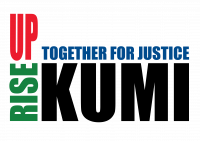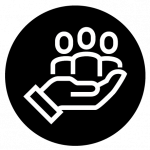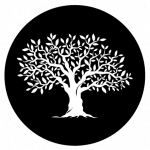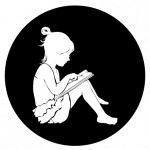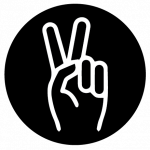Women in Black
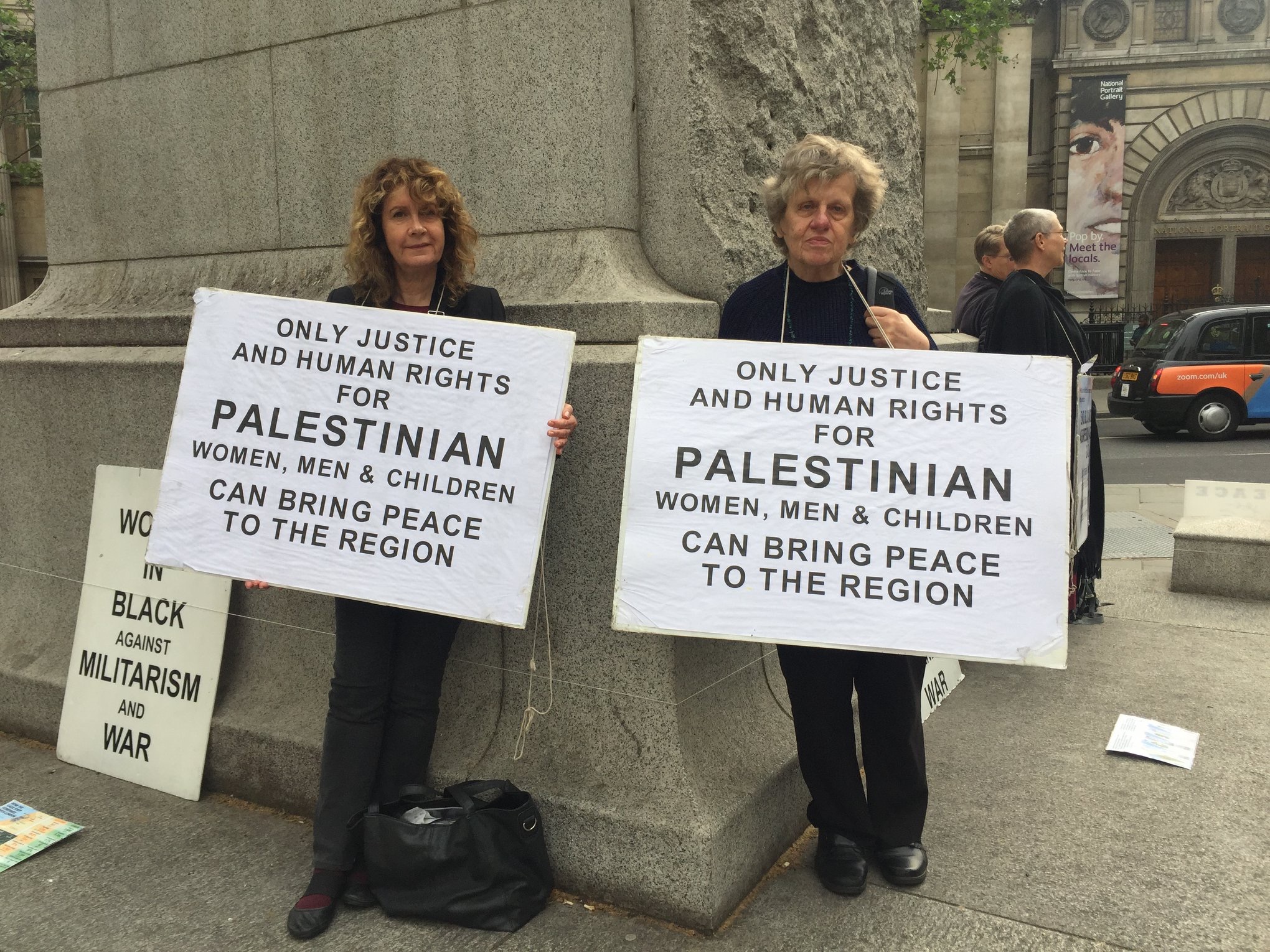
Women in Black
Women Under Conflict
There is a twisted irony at the intersection of war and gender: war is almost always declared and fought by men. But it is women and children that suffer much of the violence. The end of war is no different: men negotiate treaties, while the voices, needs, and expertise of women are ignored. Women in Black is a worldwide network working to make women part of the solution to the Israeli-Palestinian conflict. Here is what you need to know about the role of women in solving this seemingly intractable problem and what you can do so that together we can rise up.
Organization
Women in Black (WiB) is a worldwide network of women committed to peace with justice and actively opposed to injustice, war, militarism and other forms of violence. As women experiencing these things in different ways in different regions of the world, we support each other’s movements. An important focus is challenging the militarist policies of our own governments. We are not an organization, but a means of communicating and a formula for action. Women in Black groups do not have a constitution or a manifesto, but the feminist perspective is clear from our actions and words.
We know that male violence against women in domestic life and in the community, in times of peace and in times of war, are interrelated. Violence is used as a means of controlling women. In some regions, men who share this analysis support and help WiB, and WiB are supporting men who refuse to fight. Together women can educate, inform and influence public opinion, and so try to make war an unthinkable option.
Women in Black groups use non-violent and non-aggressive forms of action, such as holding vigils, sitting down to block a road, entering military bases and other forbidden zones, refusing to comply with orders, and ‘bearing witness.’ Any group of women around the world may organize a Women in Black vigil against a manifestation of violence, militarism, or war. Our nonviolent vigils often take the form of women wearing black, standing silently in a public place at regular times and intervals, carrying placards, and handing out leaflets. Wearing black in some cultures signifies mourning, and feminist actions dressed in black convert women’s traditional passive mourning for the dead in war into a powerful refusal of the logic of war.
Women in Black vigils originated in Jerusalem in 1988, in response to the beginning of the first Palestinian Intifada. When Women in Black in Israel/Palestine, as part of a coalition of Women for a Just Peace, called for vigils in 2001 against the Occupation of Palestinian lands, at least 150 WiB groups across the world responded with estimates that altogether 10,000 women may have been involved. At the peak of the anti-occupation movement there were 30 vigils throughout the country. Today there are four regular vigils that have been demonstrating since 1988. The vigils take place every Friday from 1:00 – 2:00 PM in Gan Shmuel, Haifa, Jerusalem, and Tel Aviv.
You can find Women in Black on their website at http://womeninblack.org/.
Topic
In the Palestinian context women face many of the same challenges as men, yet also carry the burdens of the occupation in unique ways that often go unnoticed by the public and the media. Home demolitions and overcrowded housing conditions, for example, cause unnecessary economic hardship for families. Within the home, women also take on the role of primary healthcare providers (specifically for their children and the elderly), and have difficulty accompanying family members to hospitals because of the checkpoints. Women who are widowed take on many roles, providing for their children, caring for the home, and offering stability to their family.
Many women experience physical, psychological and sexual violence from settlers, soldiers, prison guards, and family members within the home. Palestinian women often do not report the violence they experience from soldiers and settlers because they fear the repercussions and do not believe the legal system can protect them. According to the Women’s Center for Legal Aid only 105 out of the 1805 filed cases (6%) resulted in indictments between 2000-2009. Similar situations of sexual violence exist within the Israeli prison system, where women face sexual assault or are coerced with threats about their loved ones being put in harm’s way. In addition to this cruelty, minimal visits with family and separation from their children add to the psychological and emotional stress women face in prison. It is important to also note that women may face violence and abuse within their own households. According to UN Women, about 30% of women have experienced violence within the household, but only 35% of them chose to report the violation. Women in Palestine suffer from the combination of both the occupation and patriarchal norms.
Jean Zaru, a Palestinian Christian woman who is a Quaker and a pacifist, paints a poignant picture of some of the many struggles women face under occupation:
Most of the media images of Palestinians are of men and boys by the hundreds in the streets in Gaza, whether at demonstrations or funerals. … But when there is gunfire, when there are deaths, when there are funerals, women are involved. They do not leave the house and stream through the streets, but women are still holding up half the sky. Much of the work of women is invisible, especially in the eye of the media.
The women of Palestine are often referred to as the “glue of our society.” We are the ones who hold our families together, while our husbands, brothers, and sons are in prison, deported, wounded, or killed, or when they have migrated for economic or political reasons. Yet, as in all societies, we Palestinian women have been cast into roles that have kept us subservient and out of critical decision-making circles. …
So as a Palestinian woman, I find myself struggling on two fronts. Palestinian women must work for liberation on the national front while, at the same time, working for liberation as women on the societal level. We have to struggle to free ourselves from hierarchy and from the male-dominated structures of our society1.
1 Jean Zaru. Occupied with Nonviolence. 109-110.
Story
“I drew her bleeding”
In his introduction to the book Letters to Palestine: Writers Respond to War and Occupation Vijay Prashad, while a noted historian of the Middle East, plays the outsider, looking in at the tragedy of Palestine. In this passage he tells the story of Fida Qishta, who in turn tells the story of Mona. This woman and girl both use their art to draw attention to the injustices committed to them and their people. It is worth asking: What power do they have? Who is responsible for their realities? How would their lives be different if it were women and girls like themselves that were in charge? And how do we make that happen?
“I drew her bleeding”
One more war, one more exhausting period for the Palestinians filled with death and destruction, terror and its traumas…
Fida Qishta, born and raised in Rafah (Palestine), took her video camera around to document life in her Gaza. She put her story together in a painful meditation of a film, Where Should the Birds Fly (2012). Scenes of ordinary farmers and fisherfolk trying to ply their trade, while Israeli snipers and gunboats shoot at them, get straight to the point. All those who talk of Hamas rockets being fired into Israel should take a look at this section of Qishta’s film, where there is a banal, even tendentious use of the gun to degrade and frighten unarmed Palestinians as they try to make a living. Bulldozers and border crossings make it impossible to lead lives. Then comes Cast Lead (2009). It is a good thing that Qishta has her camera and that she is so brave. The scenes are disturbing and honest—there is nothing manufactured about her film. We are there on the day (January 18) an Israeli attack killed forty-eight members of the family of Helmi and Maha Samouni, whose house in Zeitoun, in the suburbs of Gaza City, was bombed and then occupied…
Then we meet Mona. She is the highlight of this disturbingly accurate film. At age ten, she is Qishta’s guide into the suffering and resilience of Gaza. Her farming family were herded into a neighbors’ home by Israeli troops who accuse her brother of being with Hamas; the home is then bombed from the sky. Qishta asks Mona how many people in her family died that day. “In my immediate family?” asks Mona, innocent to the gravity of her own question. So much death, but she appears resigned and wise. “If we die,” she says gravely, “we die. If we survive, we survive.” She shows Qishta a drawing she did of the massacre. “It was a sea of blood and body parts,” she says. “They took the most precious beloved of my heart,” meaning her parents. She points to a person in her drawing, “This is Palestine. I drew her bleeding.”
The full introduction is published online by Verso Books at https://www.versobooks.com/blogs/1994-a-country-in-darkness
Action
Join or start a vigil! You can find out if a vigil is operating close to you by visiting http://womeninblack.org/. If a Women in Black vigil isn’t operating in your area you can start your own. Follow this link (http://womeninblack.org/action/) to learn more about the general guidelines to start a Women in Black vigil. Coordinate with your local Kumi community to publicize when and where your vigil will be.
If you live in an area where starting a vigil isn’t possible right now, you can start with an online vigil, getting people to change their profile pictures and tweet/call/chat/and post information to Twitter at the same time each week. Then, when the time comes to return to the streets you’ll have a community to start with.
Take a picture of your vigil and share it on social media. Include a link to this page of the Kumi Now website along with the hashtags #WomenInBlack, #KumiNow, and #Kumi41. If you are unable to join or host a vigil, spend one hour at a public corner in protest of the occupation and in solidarity with the vigils happening around the world. If you are unable to join or host a vigil, spend one hour at a public corner in protest of the occupation and in solidarity with the vigils happening around the world.
Literature
“The Words under the Words” by Naomi Shihab Nye
My grandmother’s hands recognize grapes,
The damp shine of a goat’s new skin.
When I was sick they followed me,
I woke from the long fever to find them
Covering my head like cool prayers.
My grandmother’s days are made of bread,
A round pat-pat and the slow baking.
She waits by the oven watching a strange car
Circle the street. Maybe it holds her son,
Lost to America. More often, tourists,
Who kneel and weep at mysterious shrines.
She knows how often mail arrives,
How rarely there is a letter.
When one comes, she announces it, a miracle,
Listening to it read again and again
In the dim evening light.
My grandmother’ voice says nothing can surprise her.
Take her the shotgun wound and the crippled baby.
She knows the spaces we travel through,
The messages we cannot send – our voices are short
And would get lost on the journey,
Farewell to the husband’s coat
The ones she has loved and nourished,
Who fly from her like seeds into a deep sky.
They will plant themselves. We will all die.
My grandmother’s eyes say Allah is everywhere, even in death.
When she talks of the orchard and the new olive press,
When she tells the stories of Joha and his foolish wisdoms,
He is her first thought, what she really thinks of His name.
“Answer, if you hear the words under the words –
Otherwise it is just a world with a lot of rough edges,
Difficult to get through, and our pockets are full of stones.”
By Naomi Shihab Nye, a poet, songwriter, and novelist born to a Palestinian father and American mother. As published in the Anthology of Modern Palestinian Literature, edited by Salma Khadra Jayyusi.
Resources
Women on nonviolent resistance:
- Freya Aquarone: The Art of Resistance: https://youtu.be/QttCF1sURzU
- Scilla Elworthy: Fighting with Nonviolence: https://youtu.be/mk3K_Vrve-E
- Erica Chenoweth: The Success of Nonviolent Civil Resistance: https://youtu.be/YJSehRlU34w
Articles on the role of women in solving the Israeli-Palestinian conflict:
- “Can Women Solve the Israeli-Palestinian Conflict?” By Aloha Ferber, Forward https://forward.com/sisterhood/323087/will-women-solve-the-israeli-palestinian-conflict/
- “Women and Power in the Israeli-Palestinian Conflict” by Lucy Nusseibeh, Palestine-Israel Journal of Politics, Economics and Culture http://www.pij.org/details.php?id=1371
- “Gender and Conflict Transformation in Israel/Palestine” by Shimona Sharoni, Journal of International Women’s Studies http://vc.bridgew.edu/cgi/viewcontent.cgi?article=1026&context=jiws
- “Role of Women, Youth in Peaceful Settlement of Question of Palestine at Heart of United Nations Meeting in Paris”, United Nations https://www.un.org/press/en/2012/gapal1232.doc.htm
Reports by WCLAC and others on women in the occupation:
- Joint-submission by WCLAC to Israel’s Universal Periodical Review: Palestinian Women Under Prolonged Israeli Occupation (2017): http://www.wclac.org/english/etemplate.php?id=1941
- Women’s Voices: Glimpses of Life Under Occupation (2012): http://www.wclac.org/english/etemplate.php?id=1148
- UN Submission by WCLAC on Jerusalem Women- Issues of Concern (2017): http://www.wclac.org/english/etemplate.php?id=1880
- Women and the Draft Constitution of Palestine (2011): http://www.wclac.org/english/etemplate.php?id=1078
- The Experience of Personal Status Law in Palestine (2011) http://www.wclac.org/english/etemplate.php?id=1105
- Women’s Center for Legal Aid and Counseling: Women’s Voices in the Shadow of the Settlements: A 2010 report on Israel’s human rights violations against Palestinian Women
Books:
- Zaru, Jean. Occupied with Nonviolence. 2008
